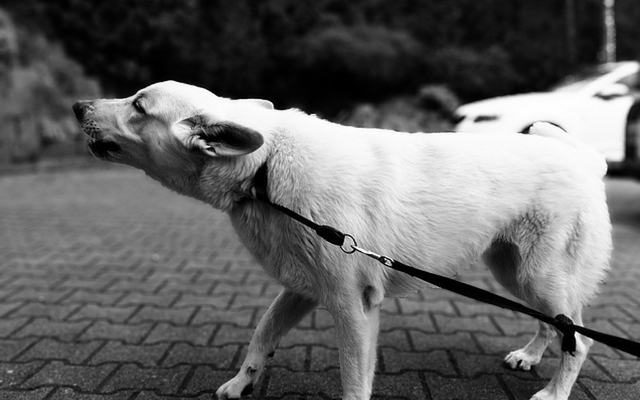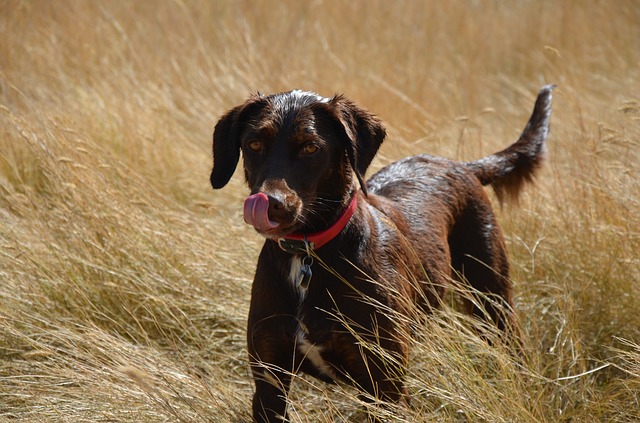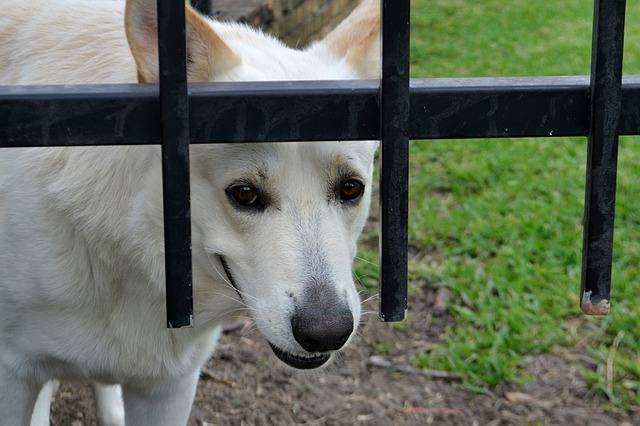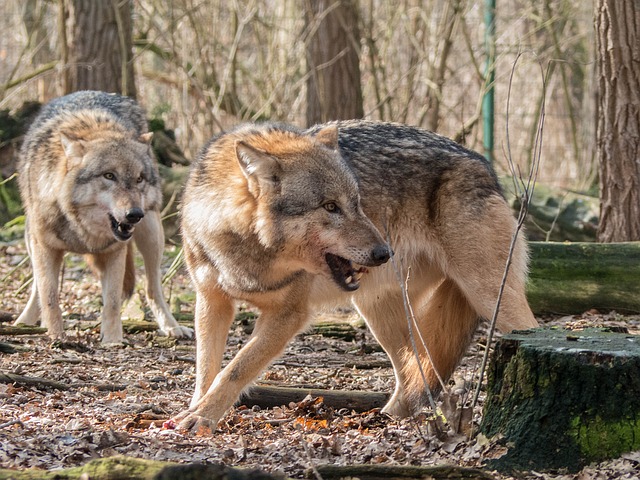There’s no denying the fact an aggressive dog is potentially dangerous. It’s a problem that requires attention from a professional dog behaviorist, but there’s a lot more to canine aggression than most people realize. Aggression is one of the most common behavioral issues seen in dogs, and it’s one of the top reasons why dogs are euthanized and surrendered to shelters. Coincidentally, it’s also one of the most misunderstood topics in the dog world. We’re here to clear the air and dispel these common myths about dog aggression.

1. A “good” dog is a dog that’s never aggressive.
Similar to a tail wag or shake off, aggressive behavior is a completely normal form of canine communication. Your dog can’t come out and tell you when they’re scared, frustrated, or angry, and lashing out is their desperate attempt to make you understand. Growling, barking, snapping, and even biting are all typical ways in which dogs settle conflicts. Even “good dogs” that excel in obedience class and love spending time with people have been known to occasionally resort to aggression. PetCoach explains it well by saying,
“Expecting your dog to never do any of these things [showing aggression], no matter what happens, is a bit like expecting a person to go through life without ever having a single disagreement or argument with someone else–not very realistic in either case!”
2. Aggression happens out of the blue.
When people say a dog attacked them “out of nowhere,” all they’re really saying is they weren’t paying attention to the dog’s body language. Dogs almost never attack without warning. (The one exception is if the dog has a mental condition that impairs cognitive function.) A dog’s aggressive behavior is always in response to a trigger, and once you know what that trigger is, you can learn to expect their reaction. Contrary to popular belief, dogs are quite good at communicating their discomfort in non-aggressive ways. The issue is, humans are’t good at reading those signals before the situation escalates.
Before a dog attacks, their body language reflects what they’re thinking. Yawning, licking their lips, and refusing to look directly at someone are all signs of a stressed out dog. They take on a “frozen” posture where their body is rigid and their eyes are wide and unblinking. The signs might be subtle to the human eye, but when you know what to look for, aggression is one of the most predictable dog behaviors there is.

3. An aggressive dog is always an aggressive dog.
Many people think that once a dog shows signs of aggressive behavior, they’re no longer safe to be around. This kind of assumption is what lands countless healthy, friendly dogs in shelters and on euthanasia lists. A dog might growl at a groomer who comes at them with nail clippers, but that kind of fear aggression doesn’t usually translate into other parts of the dog’s life.
In this instance, context is key. Once the trigger is removed (in this case the trigger is the groomer brandishing nail clippers), most dogs will go back to being their normal, friendly selves. They’re aggressive around nail clippers because they’ve developed a negative association with having their nails trimmed, but they have no problem with interacting with people on a normal basis. Their aggression doesn’t define them, and they don’t deserve to be given up because of the misunderstanding that is does.
4. All aggression is the same.
Aggression in dogs is generally understood as a set of behaviors meant to threaten or harm another animal or person. It usually starts with a warning, like growling or snapping, and escalates into a dangerous physical confrontation. The physical actions might be the same from one dog to the next, but that doesn’t mean all dog aggression is the same.
There are actually several different kinds of canine aggression including frustration-elicited aggression, fear aggression, territorial aggression, predatory aggression, defensive aggression, and pain aggression. To determine what kind of aggression a dog is displaying, think about what happened immediately before the attack, what/who bore the focus of the aggression, and what seemed to stop it. The only way to help a dog work through their behavioral issues is to understand what caused it in the first place. ASPCA says,
“A beneficial scheme for understanding why your dog is aggressive is based on the function or purpose of the aggression. If you think of aggression this way, you can determine what motivates your dog to behave aggressively and identify what she hopes to gain from her behavior.”
5. Aggressive dogs are born that way.
It’s true some dogs have genetic makeups that make their personalities more assertive than others, but that rarely translates into aggression. People like to blame nature for a dog’s aggressive behavior, but the truth is, domestic dogs are not inherently aggressive toward people. Aggression is something they learn through life experiences. Some do it as a defense mechanism to keep potential threats at bay, and others resort to growling and snapping because of specific events that transpired in the past. Either way, something had to happen to make them believe lashing out is the best/only solution to a particular problem.
6. Certain breeds are more aggressive than others.
Today it’s pit bulls, and in the past, Rottweilers, Dobermans, Mastiffs, and even German Shepherds have all suffered under the scrutiny of misguided stereotypes. There have been countless scientific studies on the topic proving aggressive behavior is just as likely in “family-friendly” breeds as it is for the breeds most often banned in cities and public housing. The incorrect idea that there are aggressive dog breeds leaves countless dogs abandoned in shelters and mistreated by people who don’t understand them. If you’re still not convinced, read this study published in ScienceDirect. It says,
“These data suggest that although general characteristics of dogs and owners may be a factor at population level, it would be inappropriate to make assumptions about an individual animal’s risk of aggression to people based on characteristics such as breed.”
7. Aggression is only a problem in big dogs.
If you’ve ever had your ankles nipped by a feisty Chihuahua, you already know small dogs are just as likely to be aggressive as big dogs. Small breed dogs often have a problem called “Napoleon Syndrome.” It’s not an actual medical condition, but it’s what happens when small dogs overcompensate for their stature by lashing out with aggression.
It’s true a bite from a small dog won’t do as much damage as a bite from a big dog, but that doesn’t mean small dog aggression doesn’t matter. Too many small dog owners think it’s cute when their little dog “acts all tough.” But bites from small dogs always hurt, and there’s the chance they can become infected. Not addressing the issue of aggression in a small breed dog isn’t helping the dog, and it’s definitely not helping your ankles.
8. Dominance leads to aggression.
In the late 1900s, researchers thought they had a solid theory concerning canine dominance. They looked at how captive wolves interacted with each other and took notes on pack structure. When the study was finished, scientists made the assumption that because dogs are descended from wolves, domestic dogs must behave similarly to the wolves in the study. It became widely accepted that “dominant” dogs use force to dethrone those that threaten their status just like the captive wolves did.
The issue, however, is those scientists were wrong. It has since been proven that domestic dogs do not behave the same as captive wolves, and so-called “dominant” behavior does not lead to aggression. That mistake has since been recognized, but it’s lead to a misunderstanding about what dominance actually means when it comes to dogs. Australia Veterinary Behaviour Interest Group is working to set the record straight and says,
“It is not accurate to describe a dog as having a dominant personality. The word should only ever be used to describe a single interaction between two individuals competing for a resource such as a piece of food or a toy. One dog will usually give up the contest and leave the resource for the other. In that situation, the individual who wins is dominant.”
9. Dogs should be punished for showing aggression.
When a dog growls, lunges, or snaps, many people jump to doing what they think is the most appropriate reaction: punishment. What they actually end up doing, however, is making the problem worse. Scolding and hitting a dog that is obviously already afraid, nervous, or uncomfortable will push their emotions even further into the red. A study done in 2009 found that when hit or kicked, 43% of dogs respond with more aggression, and using any kind of confrontational training tactic usually results in an increase in aggression.
It’s important to remember that aggressive actions are a form of communication, and by growling or even biting, your dog is trying to tell you something. Dog trainers including Victoria Stilwell recommend using a combination of positive reinforcement and environmental management to help a dog overcome whatever it is that’s making them feel like aggression is the right thing to do.



 Toledo, United States.
Toledo, United States.
